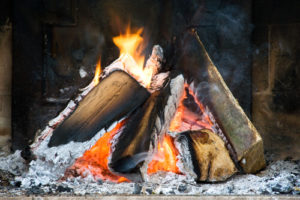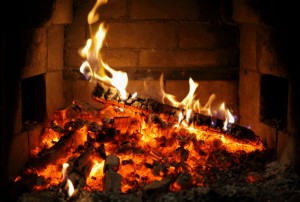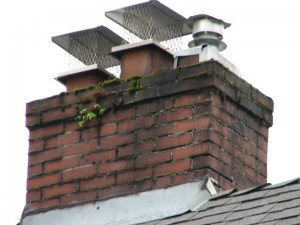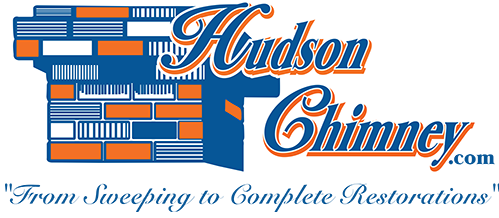by Mark Hudson | Feb 6, 2018 | Ash Disposal
Every day that you burn wood in your fireplace, you are creating ash. Over the course of an entire winter, you may have to remove ashes from your fireplace countless times. It’s a headache, but it’s necessary. Leaving them in the firebox can crowd your fire, make it difficult to light and maintain, and even cause wood and hot ashes to fall out of the fire! Don’t risk it, remove the ashes regularly, and remove them safely.
Use Appropriate Tools
You can find fireplace accessories at a home improvement store. Make sure they work for you, because not everyone is the same. Be sure the shovel is long enough that your face and hands are away from the hot fire. Homeowners who have asthma or chronic respiratory illnesses may choose to wear a face mask while cleaning ashes from the fireplace. Make sure that your clothes are not loose and that hair does not drop close to the fire. It is best to remove ashes when the fire is out or very low. Removing red hot coals is dangerous, even if you have an appropriate metal bucket to store ashes in. Scoop the ashes into your metal bucket, and carry them outside to cool at least 5 feet from your house. If you save ashes for various uses, you may have a metal trashcan with a lid to dump them into. Keep this container away from flammables.
Reasons to Save Your Ashes
Your ashes are going to continue to build up throughout burning season, with you removing them regularly. Leave ¼ inch each time in order to insulate the bottom of the firebox. The rest can be useful for many purposes.
Cleaners: Add water to a small amount of ashes and polish silver, doorknobs, and chrome. Larger amounts mixed with water can clean stoves, ovens, and pots and pans.
Deodorizer: Dust a handful of cool, dry ashes into your pet’s fur to neutralize odors and deter mites and ticks.
For the Garage: Toss ashes onto slick sidewalks and driveways to prevent slips and falls. Pour onto oil spills on the driveway and in the garage.
For the Garden: Sprinkle ashes over soil to change the alkaline levels for certain plants to thrive. Putting along the edge and in between rows also deter bugs and slugs.
Get Creative: You can use your ashes to make lye, which you can use to make homemade soap products.
If you think your fire is producing too much ash, there may be a reason. Avoid extra ashes by building the best fire possible.
Have you been avoiding your ashes, only emptying it when it’s absolutely necessary? Like so many other things, a routine will help you stay on top of the problem. Have your chimney system swept regularly to in addition to emptying the ash so that the flue will be clear of soot, creosote, and debris as well. Even if you use an ash dump for your ashes, it should be cleaned out regularly by a professional. You really can’t go wrong with professional services. Call the chimney and fireplace experts to learn more about your fireplace and chimney system, and for valuable services that keep it working for you.
Call Hudson Chimney at 904-282-4159 today.
by Mark Hudson | May 28, 2015 | Jacksonville
In 1979, Mark Hudson founded Hudson Chimney to provide professional fireplace and chimney services in Northeastern Florida. Certified by the Chimney Safety Institute of America (CSIA) as a chimney sweep and a dryer vent technician, Hudson is proud to serve the city of Jacksonville and works hard on community projects to make Jacksonville an even better place. We would like to tell you more about this beautiful city we have served for over 30 years.

WATER ACTIVITIES
With over 22 miles of beaches, Jacksonville is home to three beaches: Atlantic Beach, Jacksonville Beach, and Neptune Beach. Our beach areas offer dining, entertainment, lodging, and recreational activities for the entire family. Fishermen have the best of both worlds in Jacksonville with freshwater and saltwater fishing opportunities. You can even deep sea fish in the Atlantic Ocean. The St. Johns River flows through the city and provides a place to kayak and paddleboard.
ARTS AND CULTURE
Named as one of the top 25 destinations for the arts in this country, Jacksonville is home to several museum, including the Museum of Contemporary Art Jacksonville (MOCA). At MOCA, you will find over one thousand works of art, such as painting, photography, sculpture, and printmaking. You can also find live theater and live music throughout the city as well as festivals throughout the year that celebrate jazz, blues, and country music.
SPORTS
Sports fans have a lot to enjoy in Jacksonville. You can watch professional football by going to see a Jacksonville Jaguars game, and you can catch one of the biggest professional golf tournaments, THE PLAYERS Championship. Golfers can even play a round at the site of this tournament. Outdoor sports enthusiasts can enjoy biking, hiking, canoeing, surfing, and other activities along our scenic waterways.
HISTORY
Filled with multiculturalism, the history of Jacksonville can be found throughout the city. One of the city’s most important historical sites is Fort Mose, which was both the earliest legal settlements in America for free Africans and the precursor site to the Underground Railroad. For a deeper look at the history of Jacksonville, tour one of our historical museums, such as the Mandarin Museum & Historical Society that shows what life was like in 19th century Florida.
SHOPPING
Whether you prefer shopping at a mall, at locally-owned boutiques, along the beachside, or in a downtown setting, Jacksonville is filled with opportunities to shop until you drop. If you like to save money, you will enjoy shopping at our two outlet shopping centers. No matter your budget, shopping enthusiasts will love what our city has to offer.
Want to know more about Jacksonville? Contact Hudson Chimney to find out our favorite places and things to do in this beautiful city.
by Mark Hudson | Dec 24, 2014 | Ash Disposal
Every time you have a wood or pellet-fueled fire, it is a fact of life that ashes will be left behind for you to remove. Do you know how to properly dispose of these ashes? If not, you could end up with a fire caused by the hot coals hidden within the ashes. At Hudson Chimney, we place a high priority on chimney and fireplace safety, so we thought we would share with you some answers to questions on how to correctly remove ashes to protect you from the possibility of a fire.

How Does Improper Ash Removal Lead to a Fire?
Many times, homeowners think that simply storing ashes in a metal bucket with no lid is the proper way to remove ashes. However, this is not the case. When this unlidded bucket is sitting outside on your porch, winds can easily blow the bucket over, and this can cause all of the ashes to fall out onto your porch or yard. When this occurs, the ashes get stirred up, and the hot coals become active once again. If your porch has a wooden floor, you could have a dangerous porch fire on your hands caused by the incorrect way of removing and storing ashes. You may also end up with an uncontrollable brushfire in your yard.
What Is the Best Container for Storing Ashes?
The importance of using a proper ash container cannot be stressed enough. Hudson Chimney strongly recommends using a pail or bucket made of sheet metal with a securely fitted lid. The most essential key for safety is the lid. To be even safer, the bottom of the pail should be slightly offset so that the actual bottom does not make contact with flooring and char the surface.
Where Is the Best Place to Store My Ash Bucket?
Never place your bucket on a wooden floor as this can be a fire hazard, even if the bucket has an elevated bottom. You should always store your ash bucket outside on a non-combustible surface such as stone, brick, concrete, or slate.
Is it Necessary to Remove Ashes After Every Fire?
According to the Chimney Safety Institute of America (CSIA), you do not have to remove ashes every time you have had a fire. In fact, the CSIA recommends leaving a one-inch layer of ash on the floor of your firebox to make it much easier to build and maintain a fire. The hot coals within the ashes will add more heat to the fuel and reflect this heat back into the fire. Additionally, a thin layer of ash also protects the floor of your firebox. However, you need to monitor this level of ash and should never allow this layer of ashes to get too deep. If these ashes make contact with the bottom of your grate, it can cause the grate to prematurely burn out.
I Have a Wood-Burning Stove or a Pellet Stove. Is the Proper Ash Removal Procedure Any Different?
The storage procedures are still the same for these stoves. If your stove is long and narrow and burns from the front to the back, according to the CSIA, it will benefit from removing the ashes that are just inside the door. Then, you can move the hot coals to the back of the stove to help igniting a fire quickly. The incoming air from combustion will reignite those hot coals and rapidly heat up the entire firebox. When all of the ashes are removed, it can be difficult to start a fire because all of the bricks in the firebox must be heated to saturation before your fire can really get going.
If you have any questions about proper ash removal, contact Hudson Chimney to ask our staff. We are happy to help you with all fire safety issues.
by Mark Hudson | Nov 30, 2014 | Ash Disposal
If you have a wood burning chimney, you may be unsure of how to properly and safely dispose of the remaining ash in your firebox. You may also be unsure as to how often you should have your fireplace and chimney professionally cleaned. The experts at Hudson Chimney have the expertise and skill necessary to answer all of your questions regarding your fireplace and chimney as well as to clean and help you maintain and repair your chimney.

When you are emptying your firebox of ash, it is important that you protect your hands from leftover embers by wearing leather gloves. Use a metal scoop to transfer the ash from your firebox to a metal bucket and add a little water. Place the bucket in a location away from any combustible materials (outside the home is best), and let it sit. It is also a good idea to use the metal scoop to mix the ash and break up any chunks before you let it sit. According to The National Garden Association, the ash can be used as a fertilizer for your gardens. However, this is not the case when you burn cardboard, treated wood, or painted wood, which create toxic ash and should not be burned in the first place, as they also release toxic fumes when they are burned.
When you do remove ash from your firebox, according to the Chimney Safety Institute of America, it is beneficial to leave some of the ash. The CSIA recommends that you leave a layer of ash that is one inch thick on the bottom of your firebox in order to make building and maintaining a fire easier, create hotter fires, and protect the floor of you firebox. However, it is still important to clean your firebox because leaving more than a one inch layer can lead to the premature burn out of your grate as well as decrease the amount of fuel you can add to your fire. If you do leave a layer of ash, make sure to remove this layer at the end of chimney season, when you will no longer be using your chimney.
It is also important to have your chimney cleaned by a professional at least once a year. Only a professional can thoroughly clean your chimney as well as remove all of the creosote that has built up. Creosote, which is very flammable, is created as a byproduct of wood burning fires when hot smoke and gases hit the cool sides of your chimney. It is important to have creosote professionally removed so it does not build up into glazed creosote, which can only be removed from your chimney with chemicals.
Call Hudson Chimney if you have any questions about the proper disposal of ash or if you have not had your chimney cleaned yet this year. The experts there have the skill to provide you with a clean, safe, and efficient chimney for the winter.
by Mark Hudson | Oct 15, 2014 | Chimney Cap
Does your chimney have a cap? A chimney cap may seem insignificant and maybe not that important, but it serves a variety of functions to protect your chimney and home! The Chimney Safety Institute of America suggests that all chimneys have caps as a preventative measure against damage and for safety reasons. If you do not have a chimney cap or your chimney cap needs to be replaced, it is important that you call Hudson Chimney as soon as possible to install a cap in order to prevent the damages associated with not owning one.

There are many reasons why it is important to keep your chimney capped. A chimney cap stops rain from getting into your chimney, preventing water damage to both your chimney and your home. Water damage can cost you a lot of money in repairs as well as destroy your chimney if not confronted quickly. While a chimney cap is important to preventing water from entering your chimney, water damage can also be prevented by having the professionals at Hudson Chimney apply a sealant to the exterior of your chimney.
A chimney cap also keeps animals out of your chimney, which can create noise, smells, and provide them an entrance into your home. Chimney caps prevent environmental debris, such as sticks and leaves, from entering your chimney as well, which can cause dangerous chimney fires. Having debris or animals in your chimney can also block smoke and fumes from efficiently leaving your chimney, which will lead to improper ventilation that will not allow dangerous fumes to exit your home. Because they prevent things from entering and blocking your chimney, chimney caps ensure that your chimney’s air flow runs efficiently. Chimney caps also help to eliminate downdrafts, which blow cold air as well as fumes from your fire back into your home. A chimney cap also protects your chimney liner and prevents sparks from flying out of your chimney and lighting things on fire.
If you are looking for a sturdy and durable chimney cap that doesn’t rust, Hudson Chimney can install a stainless steel cap for you. However, you also have the options of having a copper, galvanized, or aluminum cap installed. Consult with an expert at Hudson Chimney to determine the best cap for your chimney. No matter your choice, chimney caps are one of the least expensive chimney repairs that can be made as well as one of the simplest. Therefore, it makes financial sense to have a chimney cap installed rather than waiting for damages to occur that will cost you more!
So if you don’t have a chimney cap or if your chimney cap needs to be replaced, give Hudson Chimney a call as soon as possible. The professionals there will be sure that you have a cap installed that will protect your chimney and home.





